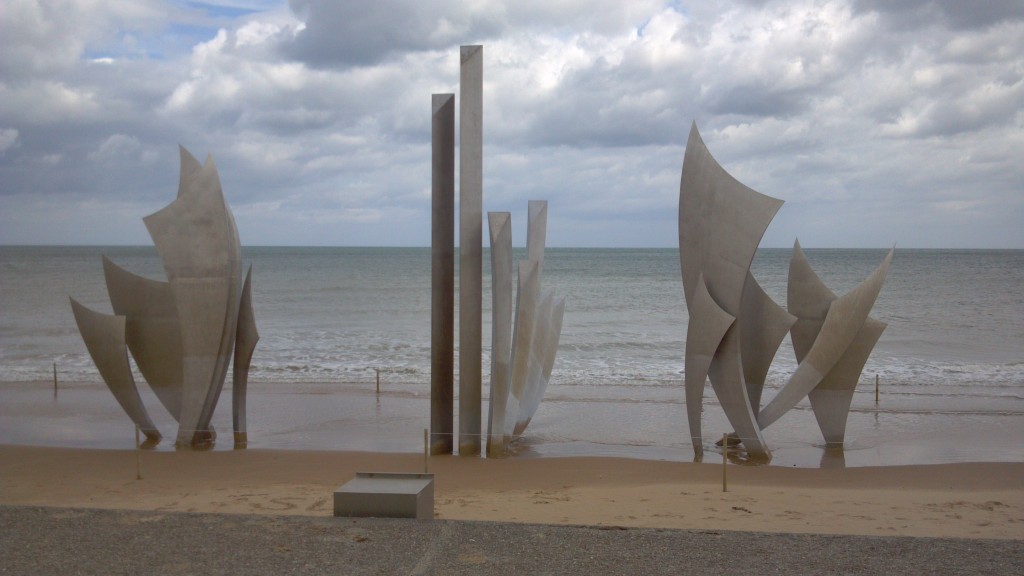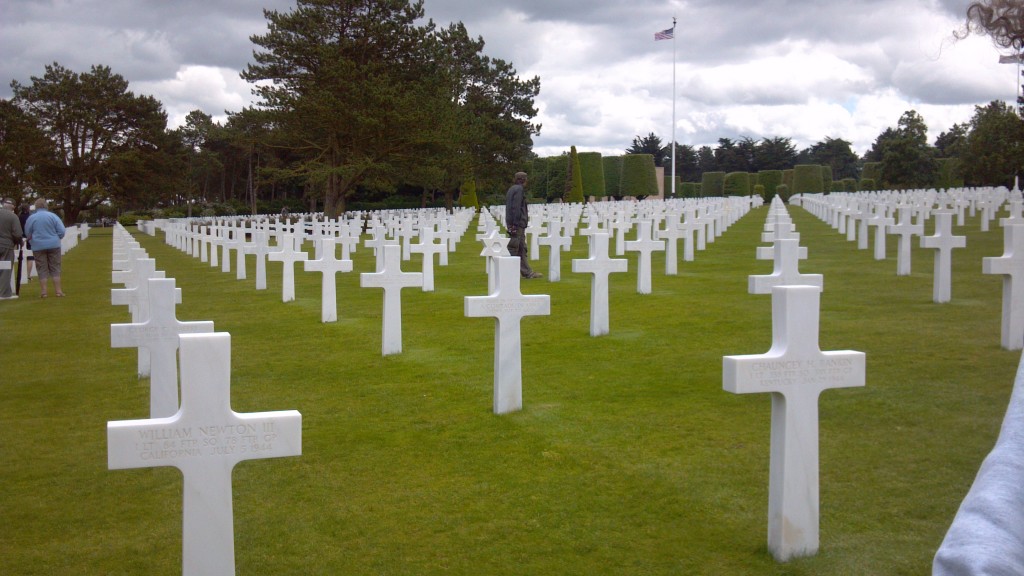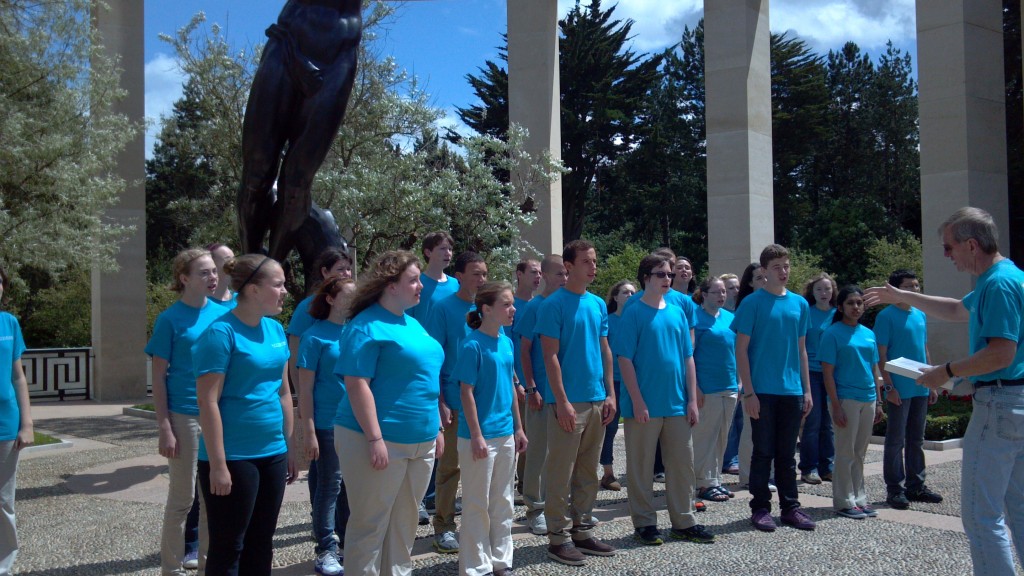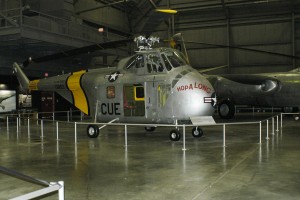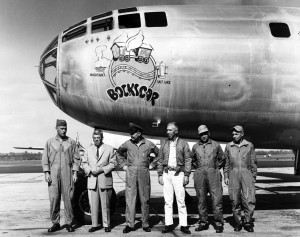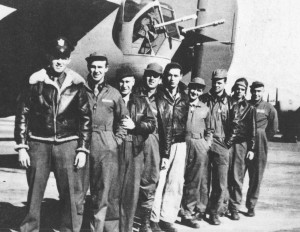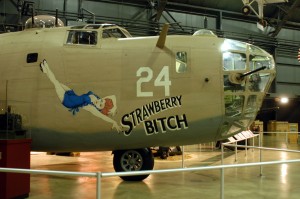As some of you may know, a couple weeks ago, I was in France, “touring” with my daughter, who’s part of the Kettering Childrens Choir.
In some ways, the trip was disappointing, as the kids’ performance and rehearsal schedule prevented us from doing many of the things one goes to France for. We didn’t have time to see the Louvre, and while some went to Versailles, they only got to spend a couple hours there. I’d been to France before, with a group in high school, so I’d seen the big attractions.
However, we did see some that I did not see when I was there before. One of those was Omaha Beach and the Normandy American Cemetery.
They did not disappoint. The travel agent told us beforehand that many of us would find it a moving experience, and she was right.
We went to Omaha Beach first, and the sight of the memorial statue where the Allied forces first landed to retake Europe from the Nazis in 1944 was breathtaking. There was something about those giant, curved wedges rising from the sand in a stark, otherwise empty beach that struck me like a punch in the gut. Although it was late June, the beach was windy as hell (probably 50mph gusts), overcast, and chilly – probably under 60 degrees. Our tour group was set up to have a picnic lunch there, but it’s hard to eat when sand’s blowing in your food and eyes. I can’t imagine what the Allied soldiers went through when they landed there, battling not only weather much worse than what we experienced, but also the threat of the Germans.
Afterward, we went to the cemetery. The size of it is staggering, and really made it hit home when we learned that almost 10,000 soldiers are buried there, plus a few support staff – including four women. Then, considering that only a fraction of the dead were buried there – many families elected to have their loved ones’ bodies sent home – and that this was only the Americans, the immense sacrifice was even more mind-boggling.
But what struck me the most was this: The French have not forgotten U.S., U.K., Canada, and other Allied forces did for Europe almost 70 years ago. After the war was over, they worked with the U.S. military to return the bodies of the Americans whose families requested it; and for those whose families decided it was more fitting that their remains stay where they’d fallen, they built the American Cemetery. Other Allied solders were buried in commonwealth cemeteries throughout the area, the answer to a very good question my daughter asked. But the French understood the importance our culture places on honoring our military, and made a special place to honor them. Today, it’s as immaculately maintained as any VA cemetery on U.S. soil, and attracts millions of visitors every year.
After our tour of the grounds, the choir performed in front of the Garden of the Missing (about 1500 soldiers whose bodies were never recovered). It was touching to see the crowds that gathered to watch them, especially the WWII vet who had tears in his eyes by the time the kids finished.
We may not have had the chance to go up in the Eiffel Tower, or see the Mona Lisa. But that windy day in Normandy, I think we saw something even more important and worthwhile. If you ever have the chance to visit northern France, I highly recommend the American Cemetery and museum.
Have you been to Omaha Beach or the American Cemetery in France, or something similar elsewhere? Whatever your nationality, what did you think? Oh, and happy belated Fourth of July!
Here’s a two-minute video about the Cemetery, if you’re interested:


